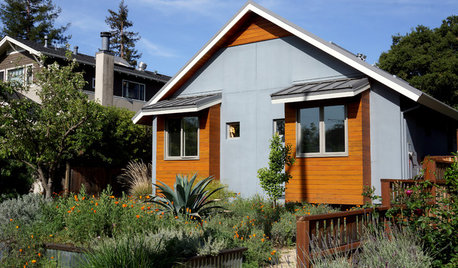Thoughts on using guana as fertilzer in W Wash
goofyisgreen
11 years ago
Related Stories

KITCHEN DESIGNHow to Choose the Right Depth for Your Kitchen Sink
Avoid an achy back, a sore neck and messy countertops with a sink depth that works for you
Full Story
CONTEMPORARY HOMESMy Houzz: Living Simply and Thoughtfully in Northern California
Togetherness and an earth-friendly home are high priorities for a Palo Alto family
Full Story
HOUSEKEEPINGDishwasher vs. Hand-Washing Debate Finally Solved — Sort Of
Readers in 8 countries weigh in on whether an appliance saves time, water and sanity or if washing by hand is the only saving grace
Full Story
ROOM OF THE DAYRoom of the Day: A Laundry So Cheery, Wash Day Is Wonderful
Pretty paint and playful touches banish chore-day blahs in a laundry room designed for a magazine’s Idea House
Full Story
FEEL-GOOD HOME12 Very Useful Things I've Learned From Designers
These simple ideas can make life at home more efficient and enjoyable
Full Story
KITCHEN DESIGNYes, You Can Use Brick in the Kitchen
Quell your fears of cooking splashes, cleaning nightmares and dust with these tips from the pros
Full Story
COLORHow to Use Marsala, Pantone’s 2015 Color of the Year
Pantone digs deep and goes earthy with its selection. Here are ways to make it work in your home
Full Story
KITCHEN DESIGNPlain-Sight Storage for the Kitchen Stuff You Use Most
Turn essential cookware, tools and even spices into design assets by displaying them out in the open
Full Story
TURQUOISEColor Guide: How to Use Teal
This blue-green color is a versatile classic for walls, furniture and accessories, conjuring everything from the tropics to the Tropicana
Full Story
COLORBathed in Color: When to Use Bold Orange in the Bath
Orange you glad this warm and happy color can energize the place where you start your day?
Full StoryMore Discussions










larry_gene
gardengal48 (PNW Z8/9)
Related Professionals
Oconomowoc Landscape Architects & Landscape Designers · East Patchogue Landscape Contractors · Miller Place Landscape Contractors · North Potomac Landscape Contractors · South Hackensack Landscape Contractors · Waterford Landscape Contractors · Carlsbad Fence Contractors · Channahon Fence Contractors · Framingham Fence Contractors · Lincolnwood Fence Contractors · Manassas Fence Contractors · Saginaw Fence Contractors · Saint Louis Park Fence Contractors · South Miami Fence Contractors · Cayce Fence ContractorsgoofyisgreenOriginal Author
larry_gene
hummersteve
gardengal48 (PNW Z8/9)
Mike McGarvey